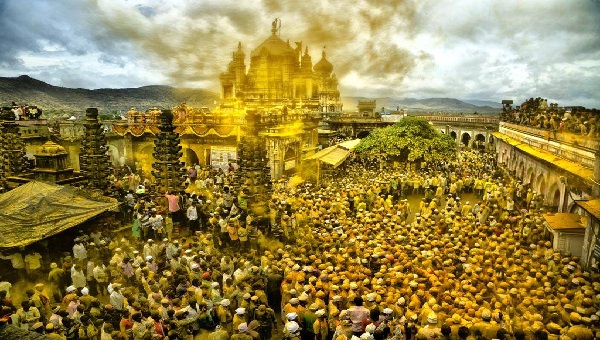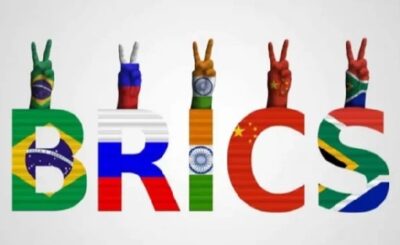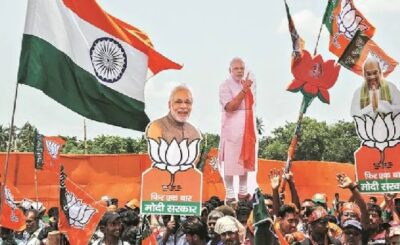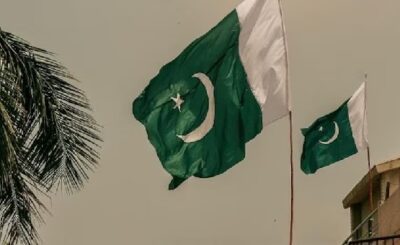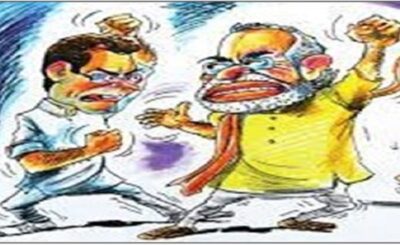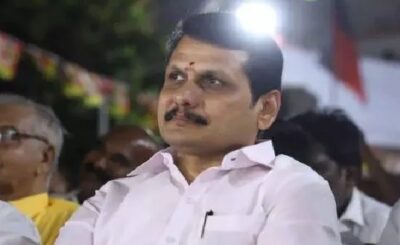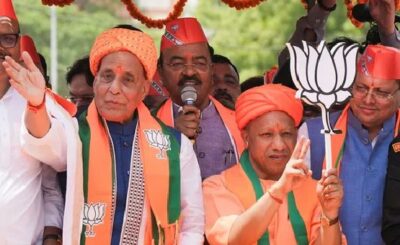V.V.S. Manian
Sonyachi Jejuri Temple is a historic and famous temple in Pune district. It is said to be around 500 years old. It is located 50 kilometers southeast of Pune. The temple is located on a hill at an elevation of 2356 feet. The temple can be approached by a series of steps from the east, west, and north. The main entrance of the temple may be reached by the northern steps. Around 200 steep steps must be climbed to get to the temple. Lord Khandoba is worshipped here as Martanda Bhairava, a form of Lord Shiva. The Lord here is known by many names: Khanderao, Khanderaya, Malhari, Martanda, Ravalnath, Yalkot Mahadev, and Lord Khandoba. He is the most popular family deity in Maharashtra. The Lord is the “kuladevata” (family deity) of most of the Maharashtrians.
Khandoba is the patron deity of the Deshastha Brahmins, warriors, farming castes, hunters, and gatherers of the hills and forests. The Lord is also worshipped by the Dhangars, the oldest tribe in the state. The Lord is also worshipped by Muslims, and they call him “Mallu”. Khandoba Temple at Kadepathar
Kadepathar is located about 3.5 kilometers from Jejuri Village. The temple is east-facing. This place is famous among devotees as the Old Fort. To reach the temple, you have to climb approximately 750 steps. There is a self-manifesting Linga of Khandoba and Malsa at this place.
This city has significance dating back to the times of Maratha ruler Shivaji. Jejuri was one of the major hill forts in Maharashtra.
History
In the 12th or 13th century, Khandoba first became a subject of worship. Throughout the Peshwas rule, the Khandoba temple was restored. Chimaji Appa, Peshwa Baji Rao I’s brother, presented Portuguese church bells from Vasai to the shrine in 1737–1739. After defeating them in the Battle of Vasai, Alexander and his Maratha men grabbed the bells from Portuguese churches as relics of conquest (1737).
Architecture
The temple is accessed by climbing nearly 200 steps. The steps have around 18 arches, 350 deep stambhas (lamp pillars), and several shrines bordering them. On one pathway going up, the pilgrims visit the shrine of Khandoba’s minister, Hegadi Pradhan. The other pathway used by devotees going down has the temple of Banai, Khandoba’s second wife.
This temple looks like a hill fort and is known as Jejuri gad (transl. Jejuri fort). The eight-sided, 350-yard (320-meter)-long fort boundary encloses a cloister courtyard, with the main temple shrine at the center. In the courtyard is a brass-coated tortoise, 20 feet (6.1 m) in diameter.
The temple is built in the Hemadpanthi architectural style, consisting of an outer square hall and an inner sanctum. The sanctum includes a Linga (symbol of Shiva) and three pairs of images of Khandoba with his first wife, Mhalsa. Hemadpant was a minister during the Yadav Dynasty. The most striking feature of the construction was the use of locally available black stone and lime. Inside, the temples are profusely decorated. These black stone pillars are such that they appear to have been turned on a lathe. Similarly, ceiling carvings are carved out of single stones. The main temple consists of a mandapa (audience hall), a garbhagriha (sanctum sanctorum), and a central courtyard lined with four large stones deepa stambhas (lamp towers).
LegendsMartand Bhairav
The tale dates back to Krita yuga (in Hinduism. Krita yuga is the first of the four Yugas, also known as the “Yuga of Truth,” (when humanity is governed by gods). It is said that during Krita yuga, the Seven Sages were performing yagnya (a ritual done in front of a sacred fire, often with mantras) on the Manichurna mountain. During that time, two demons, Mani and Malla, attacked the mountain and destroyed the yagnya. The sages asked Lord Indra and Lord Brahma for help. However, both of them were helpless against the growing violence and power of the demons Mani and Malla. So, the sages went to Kailash Mountain to ask for the help of Lord Shiva.
Owing to the prayers of the sages and gods, Lord Shiva took the form of Martanda Bhairav, and Parvati took the form of Malsa. Shiva and Parvathi rode towards the Manichurna Mountain to fight the demons Mani and Malla. The battle began in the month of Margasirsha on the day of Amavasya (no moon day) and lasted for six days. It ended during the Sashthi Thithi. Hence, a six-day festival called Champa-Shashti is celebrated at Jejuri in the month of Margasirsha. After defeating the two monsters, Shiva became known as Martand Bhairava. Shiva also became famous as Khandoba since he killed the demons with a Khadag (sword) in his hands during that battle.
When Khandoba killed Mani, he kept his leg on Mani’s forehead. Before dying, Mani realized his mistakes and prayed to God. He said that since he was born into a demon’s family, he forgot about God. But now, just before his death, he became pious by God’s touch. Therefore, he requested from God that his existence should always be in the company of God, for only that could give him some salvation. Hearing the request, Malhari-Khandoba gave a blessing to Mani. As a result, we see the statue of Mani riding a horse at Jejuri’s Khandoba temple.
Son of the Sun
The common belief is that Khandoba is a descendant of the sun god Surya and is often depicted with four arms holding bowls of turmeric that symbolize sunlight.
Shirdi Saibaba
Sai Baba had first landed in Shirdi in front of this temple, where its priest was the first person to welcome him, saying, “Aao Sai.”.
Deities
The main deity, Khandoba, holds a Bhandara-patra, or bowl of turmeric powder. Bhandara, in Marathi, means turmeric with small pieces of coconut. Khandoba’s idol is typically depicted with four arms, in one of which he holds a Bhandara-patra, or bowl of turmeric powder.
In idols, Lord Khandoba or Lord Mailara is depicted as having four arms, carrying a damaru (drum), a trishula (trident), a bhandara-patra (turmeric powder-filled bowl), and a khadga(sword). Lord Khandoba is also worshipped as the aniconic Lingam, the symbol of Lord Shiva. A horse or bull is the vahana or vehicle of Lord Khandoba, and dogs surround him. There is also a belief that the bull is Nandi, and he takes the form of a horse.
Festivals and fairs
The Bhandara festival is celebrated with much fervor and enthusiasm amongst devotees of Lord Khandoba at the Khandoba temple in Jejuri. The festival takes place on Somvati Amavasya, a new moon day that falls on a Monday. It usually happens two or three times a year. The festival attracts over five lakh worshippers, who generously sprinkle huge quantity of haldi on the devotees. This festival is very exciting and has historical importance.
Sonyachi Jejuri – The Golden Jejuri
In the day-long celebration at the temple in Khandoba, devotees throw turmeric on each other and all around, filling the air and the skies in beautiful hues of golden. This is why the temple premises are called the ‘Sonyachi Jejuri’, which translates to ‘The Golden Jejuri’. Devotees also chant and shout out hymns in praise of Lord Khanoba, like ‘Yelkot Yelkot Jai Malhar’ and ‘Sadanandache Yelkot’. Lord Khanoba is also called Malhar for the immense power he possesses. Immersed in turmeric, devotees sing and dance, invoking the deity in their prayers. The procession sees thousands of devotees waiting to touch the palki, or palanquin, which carries the deity for a bath from the temple on the hill to the Karha River. On the auspicious day, the Palki is taken from the main temple situated at the hilltop, carrying the idols of Lord Khandoba and his wife Malsha, for a holy bath in the river Karha.
Sword lifting
A sword competition is held every year at the temple during Dusshera. The inscription on the sword says it was gifted to the deity by the 17th-century Marath Sardars Mahapatro Panse and Ramarao Panse’. A competition is held every year at the temple during Dusshera. The one who lifts the sword of the temple high up for the maximum time is declared the winner. The fete involves the contestants lifting a huge sword weighing 42 kg, locally known as a khanda or khadga, not with their hands but with their teeth! The one who is able to hold it high for the longest time is the winner of a prize.
Pujas
In the early morning hours, at 6 a.m., the temple conductsSonyachi Jejuri (the Golden Jejuri) Aarti. The morning Darshan Aarti at 6 a.m.; at 12 p.m., puja and Aarti are done. After noon at 1 p.m., Naivedya is given to the god. At 2 p.m., mahaprasad is provided. At 8 pm again, the Darshan Aarti is performed, and at 9 pm, the Shei Aarti is done.
Special pujas include Nam Gotra Sankalp Puja on devotees’ names at Jejuri Khandoba Mandir, .Maha Abhishek Puja. Offer and Rudra Abhishek Puja.
Benefits
Khandoba is worshipped with turmeric, bel leaves, onions, and other vegetables. Some deities also offer him puran poli, or a bharit rodga of onion and brinjal. Bhandara is the Marathi word for turmeric. For the devotees who gather in Jejuri, throwing turmeric signifies their prayers to be answered with gold and riches by Lord Khandoba. Traditionally, turmeric is applied to brides and grooms before weddings. This temple is often visited by newlywed couples. There is a tradition of lifting your wife and climbing the steps in order to celebrate their wedlock and wish for a happy and prosperous married life. Couples can pray for a child; it is believed that Khandoba is the god of fertility.


